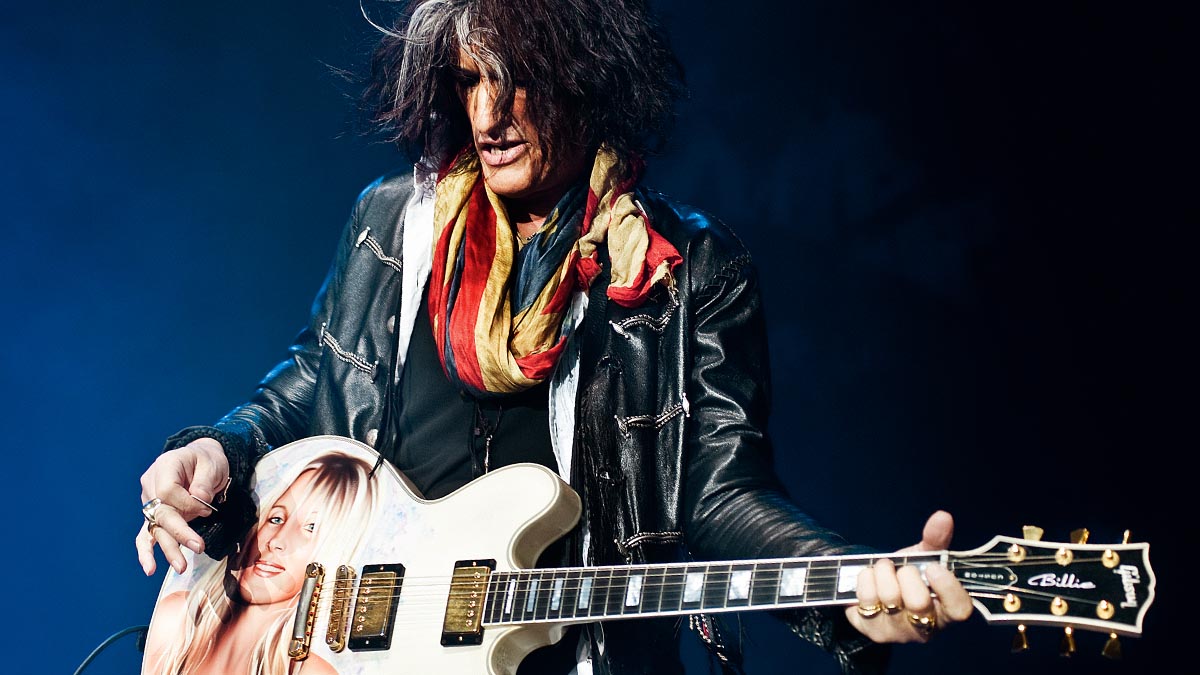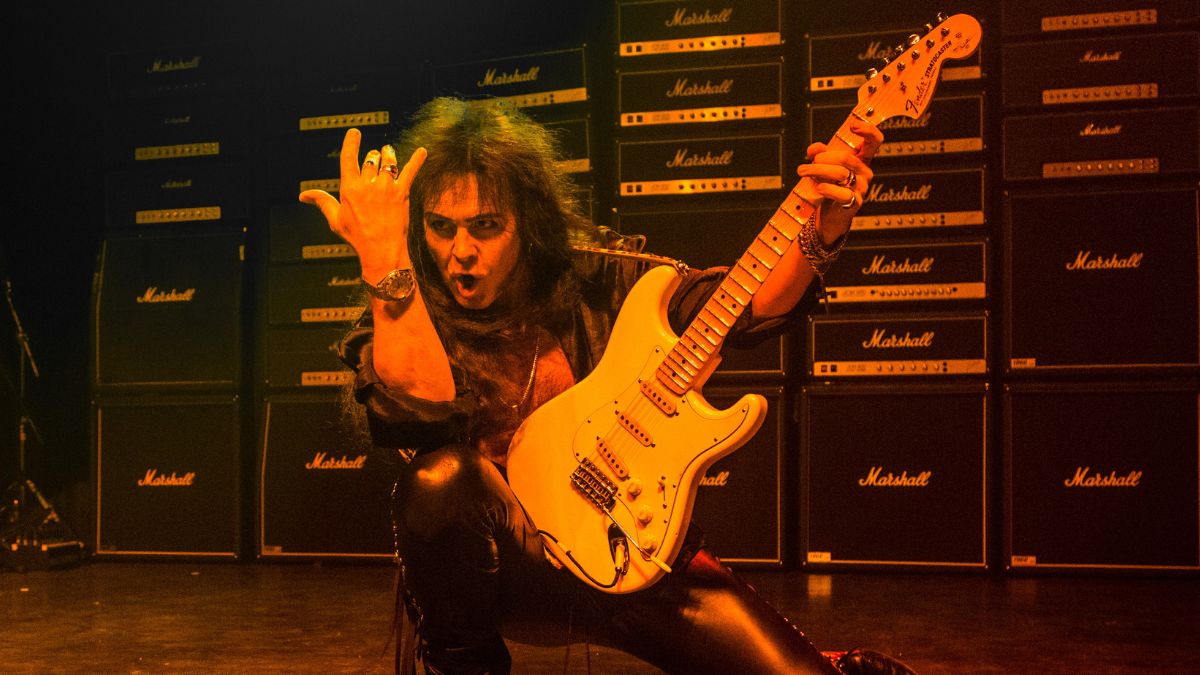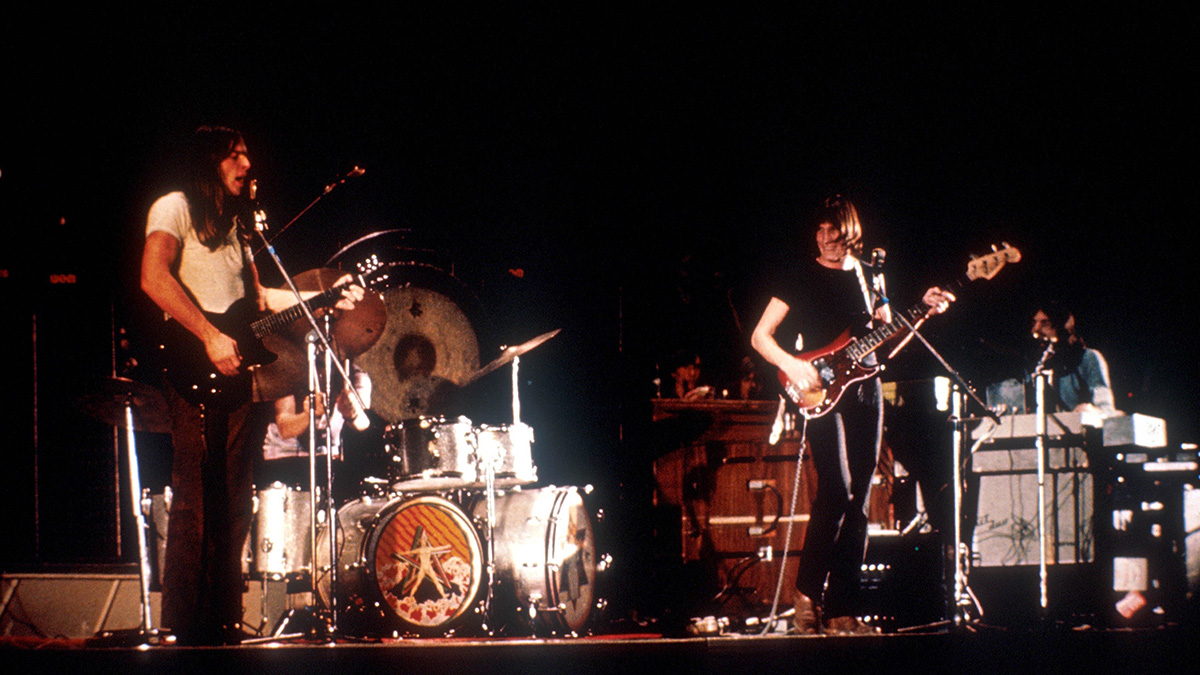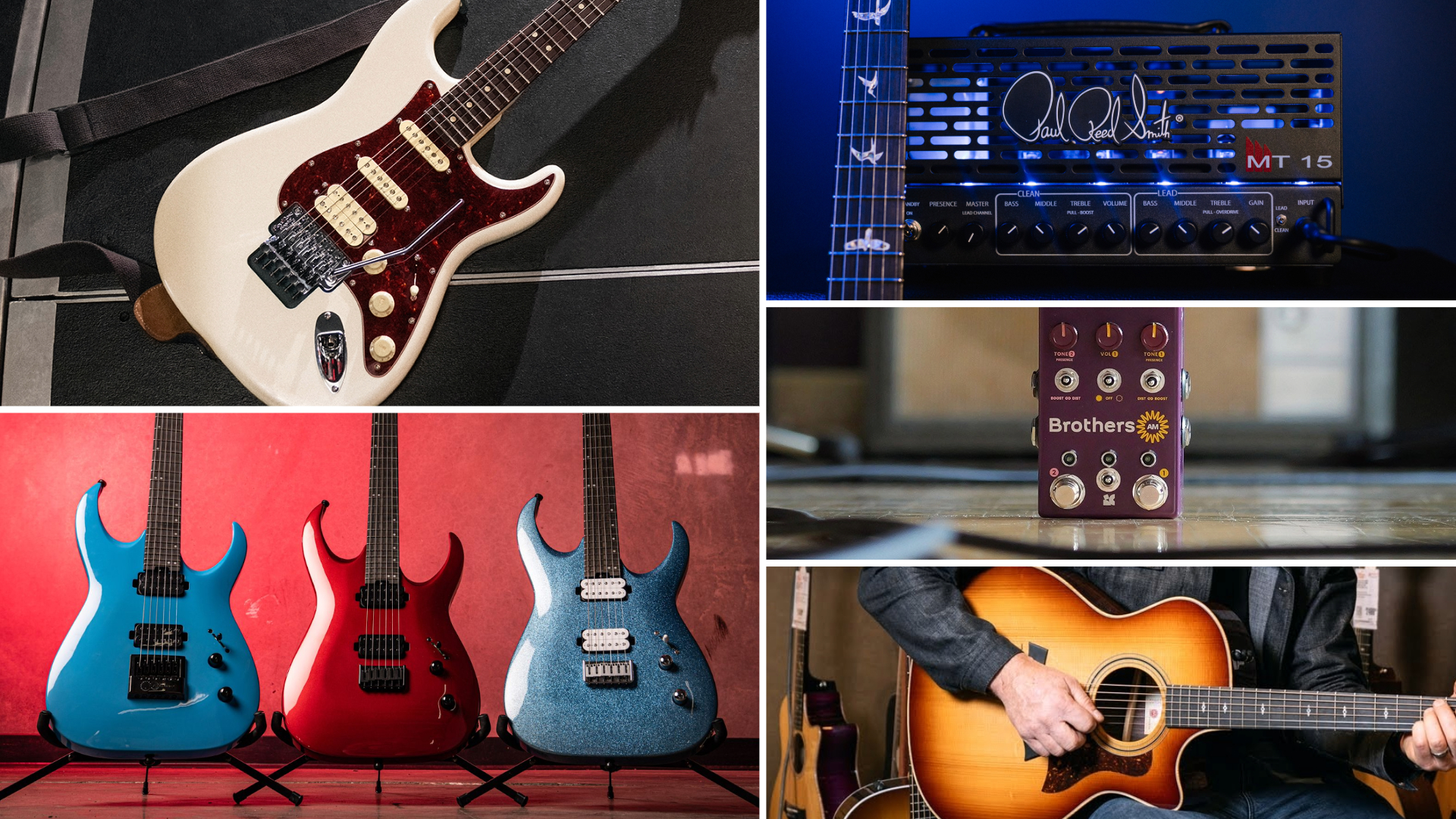The 10 Best (and Worst) Comeback Albums of All Time
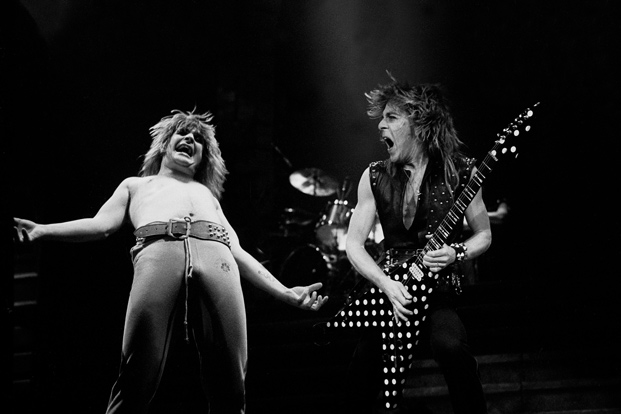
"Don't call it a comeback / I've been here for years."
So said LL Cool J in the title track from 1990's Mama Said Knock You Out, which came out when many fans and critics thought his career was just barely limping along. The album turned out to be a massive critical and commercial success.
So, with our apologies to Mr. Cool J, we are calling it comeback. Because a comeback—as defined here at Guitar World—is any critically and/or commercially successful or significant album that follows a career-altering absence (breakup, retirement) or low point (death of band members, "dead" careers, being dropped by your label, critical uber-flops, telling a London audience that you're ashamed that George W. Bush is from Texas ...).
So, with that in mind, here's our list of the 10 best (and worst) comeback albums of all time.
10. U2 — All That You Can’t Leave Behind (2000)
The Set-Up: Sitting-on-top-of-the-world stadium rockers U2 took some chances in the Nineties, releasing three adventurous, occasionally bizarre albums. The last of the bunch, 1997's Pop, the techno-, dance- and electronica-influenced culmination of their self-inflicted reinvention, was harshly panned and widely misunderstood. It was as if fans and critics collectively said, "Enough already, guys."
The Comeback:All That You Can't Leave Behind was, in every respect, a homecoming. With producers Daniel Lanois and Brian Eno back at the helm, the band returned to its classic sound (although brilliantly updated) with an emphasis on grand melodies and a renewed reliance on guitar, bass and drums. Rolling Stone called it U2's third masterpiece, next to The Joshua Tree and Achtung Baby.
Get The Pick Newsletter
All the latest guitar news, interviews, lessons, reviews, deals and more, direct to your inbox!
09. Allman Brothers Band — Brothers and Sisters (1973)
The Set-Up: Allman Brothers Band co-founder and slide guitar master Duane Allman was killed in a motorcycle accident in late 1971 while the band was recording Eat a Peach. As if that wasn't terrible enough, bassist Berry Oakley was killed the same way—in the same Georgia town—one year later. Although the band—fortified by talented replacements—forged ahead, it was as if a dark cloud had found them and decided to stick around for a spell.
The Comeback: The album that would follow the band's tragedies, Brothers And Sisters, was, by far, their greatest success, settling in for five longs weeks at Number 1 on the U.S. albums chart. It also was a high point for guitarist Dickey Betts, whose composition, "Ramblin' Man," would become the band's only hit single, reaching Number 2 on the charts. The album featured two more eternal FM radio staples, "Southbound" and "Jessica," both written by Betts. Simply put, it was the band's—and Betts'—commercial high point.
08. Foo Fighters — Foo Fighters (1995)
The Set-Up: There's no doubt that Nirvana changed everything, and that by 1994 they were one of, if not the biggest band in the world. For a few years, all of the United States felt like Seattle, and the sale of thrift-store sweaters was at an all-time high. That is, until the suicide of lead singer/guitarist Kurt Cobain in April of that year.
The Comeback: It would take one hell of an effort for anything Dave Grohl released from that point on to not be considered a mere footnote in the history of Nirvana. The fact that we now know Grohl as one of the biggest personalities in rock—who also has shared the stage with the likes of Jimmy Page and plays in a band with John Paul Jones—is a testament to his tenacity and talent for crafting memorable hooks. It could be argued that the second Foo Fighters album (and their first as a real band), The Colour and the Shape, is better suited for this position because it spawned the first mega-hits for the band, but the first Foos album was Dave Grohl playing everything himself, a lone man trying to forge ahead and create something meaningful after the demise of the biggest band on the planet. If that's not the meaning of a comeback, we don't know what is.
07. Metallica — Death Magnetic (2008)
The Set-Up: Napster, Tom Cruise film soundtracks, St. Anger. Let's face it, the turn of this century was not kind to Metallica when it came to public opinion. Their latest, guitar-solo-free album had left fans more confused than betrayed, and the follow-up film, Some Kind of Monster, showed the band in a new, vulnerable light that left fans of Ride the Lightning scratching their heads. It would take one hell of an album to get the image of the band in group therapy talking about feelings out of the heads of fans.
The Comeback: Enter Death Magnetic. While the album itself was met with some criticism—mainly for its over-compressed sound—there's no doubt that it re-ignited interest in the band's thrashier roots and made people forget about "I Disappear," perhaps for good. One might even venture to say that, had the band made another St. Anger or Load, the Big Four shows might not have ever happened. Can anyone imagine Kerry King, Dave Mustaine, Charlie Benante and others joining James and crew onstage for a rendition of "Tuesday's Gone"? Didn't think so.
06. Johnny Cash — American Recordings (1994)
The Set-Up: Although Johnny Cash never really went away (much like LL Cool J), during the 1980s, record sales and support from his longtime label, Columbia, were at all-time lows. After putting out a string of fine yet occasionally overproduced albums (Check out his cheesy cover of CCR's "Have You Ever Seen The Rain" from 1985's Rainbow album), Cash found himself without a label in the early '90s.
The Comeback: Enter Rick Rubin. The producer, known for his work with A-list hip-hop artists and heavy metal bands, offered Cash a contract with his label, American Recordings, and got right to work, stripping the Man in Black's sound down to the basics: voice and acoustic guitar. The album, considered his finest release since the late '60s, transformed Cash from museum piece to the ultimate in cool.
05. Aerosmith — Pump (1989)
The Set-Up: The early Eighties were not kind to Aerosmith. The had band lost both their guitarists by the time of the recording of Rock in a Hard Place (you know, the album with Jimmy Crespo and Rick Dufay) and were in serious danger of being a footnote of Seventies American rock. Aerosmith in the mid-'Eighties can be summed up as this: When the movie This Is Spinal Tap came out, Steven Tyler actually thought the movie was about Aerosmith. In a 1997 interview, Brad Whitford was quoted as saying, "The first time Steven saw it, he didn't see any humor in it."
The Comeback: Sure, Run DMC gave them another taste of the spotlight, and Permanent Vacation gave us "Dude Looks Like a Lady" and "Rag Doll," but if anything is going to be called a comeback album for Aerosmith, it would have to be 1989's Pump. Commercially, Pump does have a slight edge over Permanent Vacation, with the latter going a measely five-times platinum as opposed to Pump's seven-times, good enough to make it the second-best-selling Aerosmith album of all time behind Toys in the Attic. But beyond numbers, Pump just felt like an Aerosmith album (yes, even the horn section). That's not to knock the strong numbers on Permanent Vacation, but Steven Tyler singing about needing to get away to St. Tropez when the whole world was still wondering "Where were you?" may have been a bit premature.
04. John Lennon and Yoko Ono — Double Fantasy (1980)
The Set-Up: The mid-Seventies weren't the best of times for John Lennon. He had endured a separation from Yoko Ono and a complicated lawsuit filed by Morris Levy (regarding breach of contract and the messy Roots / Rock 'n' Roll scandal), not to mention the disappointing—by former-Beatle standards—sales of his 1975 greatest-hits album, Shaved Fish. So, after taking part in a recording session for Ringo Starr's 1976 Ringo's Rotogravure album, Lennon made the shift from rock star to house husband, living a private, tame existence at the Dakota in New York City with Ono and their 1-year-old son, Sean.
The Comeback: In 1980, after taking several years off, Lennon felt it was time to get back to work. Inspired and/or awakened by new music by Madness, The Pretenders and the B-52s, he decided it was "time to get out the old axe and wake the wife up," as he told Rolling Stone. The album he and Ono made, Double Fantasy, was the perfect comeback, representing a fresh start for a well-rested couple who were ready to greet the world again. The irony is that when Lennon was killed on December 8, 1980, Double Fantasy went from comeback to sad farewell.
03. Deep Purple — Perfect Strangers (1984)
The Set-Up: After releasing a string of heavy, successful albums between 1969 and 1973, including Deep Purple In Rock, Made In Japan and Machine Head, the classic "Mk II" lineup of Deep Purple—Ian Gillan (vocals), Ritchie Blackmore (guitar), Roger Glover (bass), Jon Lord (keyboards) and Ian Paice (drums)—basically just fizzled out. By the mid-Seventies, when only Lord and Paice remained (David Coverdale, Tommy Bolin and Glenn Hughes had come onboard), the band was just a shell of its former self. Their lackluster late-1975 album, Come Taste the Band, was sonic proof of that. Deep Purple disbanded in 1976.
The Comeback: In 1984, Deep Purple regrouped—with the Mk II lineup, thankfully—and released Perfect Strangers, a major worldwide hit that went platinum in the U.S. The band reached back and dusted off its classic sound, spotlighting Gillan's ageless vocals and Blackmore's lightning-fast snake-charmer scales. The album spawned several radio hits and a tour that just kept on going—because people just couldn't taste enough of the band.
02. Ozzy Osbourne — Blizzard of Ozz (1980)
The Set-Up: After two less-than-stellar releases from Black Sabbath—1975's Technical Ecstasy and 1976's Sabotage—Ozzy Osbourne took a brief break from the band to work on a project he called "Blizzard of Ozz." At the request of the band, Ozzy dropped the project to return to the band for the recording of 1978's Never Say Die!, which brought tensions in the band to a new high. A myriad of drug problems and mounting tensions between Osbourne and Sabbath guitarist Tony Iommi led to the group unanimously deciding to fire Ozzy. Within two years, the band had recorded Heaven and Hell with new vocalist Ronnie James Dio, which proved that the band could remain relevant without Osbourne. The question then became, could Ozzy pull himself out of the gutter and remain relevant as well?
The Comeback: It turns out all Ozzy needed was new management. Of course, not just any manager would do. It took then-girlfriend Sharon Arden (daughter of Sabbath manager Don Arden) to pull Ozzy out of his haze and set him to work on his "Blizzard of Ozz" project. With the help of bassist/lyricist Bos Daisley and a young guitar prodigy named Randy Rhoads, Ozzy finally finished the album, Blizzard of Ozz, which would re-ignite his career and eventually lead to his being one of the biggest personalities in rock and metal.
01. AC/DC — Back in Black (1980)
The Set-Up: In late 1979, AC/DC unleashed Highway to Hell on the world. While not a departure in sound from their previous albums, the production efforts and arrangement contributions of producer Mutt Lange, alongside the wry lyricism of lead singer Bon Scott and always-fiery guitar efforts of Angus Young, made Highway to Hell the band's most commercial success to date. Less than six months later, Scott was found dead in the back of a car, having choked to death on his own vomit.
The Comeback: Whether or not to continue the band without their charismatic frontman wasn't an easy choice for the remaining members of AC/DC, but after much soul-searching, the band recruited former Geordie singer Brian Johnson to try and fill the void left by Scott's death. Johnson had his own troubles after joining the band, struggling to pen lyrics he felt were up to the lofty standards set by his predecessor. As fate would have it, a storm rolling in one night over the Bahamas, where the band had retreated to in order to write, inspired the opening lyrics to "Hells Bells," the opening track from the ultimate comeback album—not to mention the second-highest-selling album of all time—Back In Black.
Honorable Mentions:
Iron Maiden – Brave New World
Eric Clapton – 461 Ocean Boulevard
Avenged Sevenfold - Nightmare
Alice in Chains – Black Gives Way To Blue
Van Halen – 5150
Red Hot Chili Peppers – Californication
Celtic Frost - Monotheist
Heaven & Hell - The Devil You Know
Judas Priest - Painkiller
10 Not-So-Great Comeback Albums:
01. Guns N' Roses - Chinese Democracy
02. Iron Maiden - The X Factor
03. Kiss - Psycho Circus
04. Queen + Paul Rodgers - The Cosmos Rocks
05. Aerosmith - Done With Mirrors
06. Tony Iommi - Seventh Star
07. Motley Crue - Motley Crue
08. Poison - Hollyweird
09. Ozzy Osbourne - Down to Earth
10. Judas Priest - Angel of Retribution



